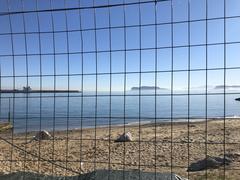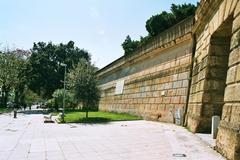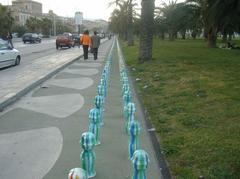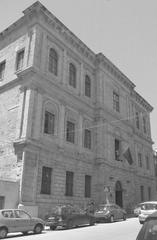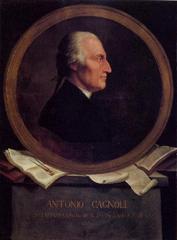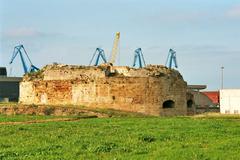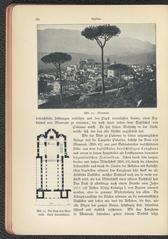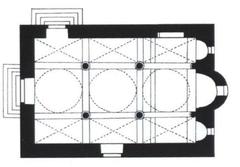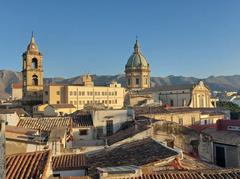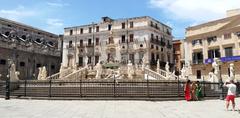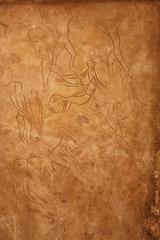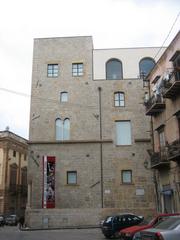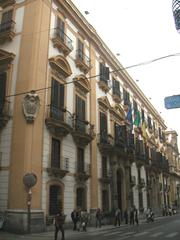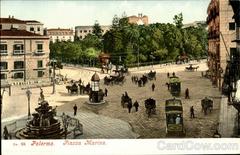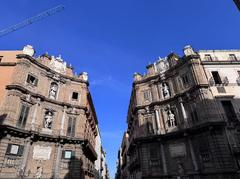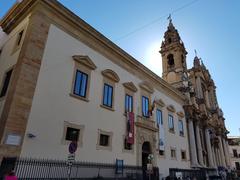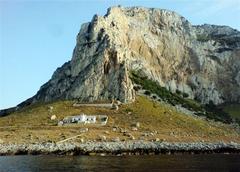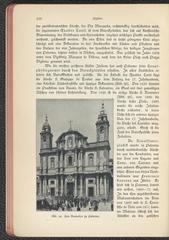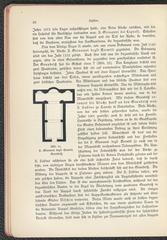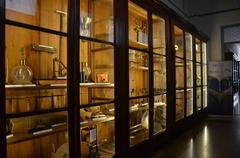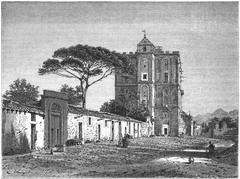
Visiting Hours, Tickets, and Historical Significance of Foro Italico, Palermo
Date: 17/07/2024
Discover the Rich History and Visitor Information of Foro Italico
The Foro Italico in Palermo, Italy, stands as a testament to the city’s rich historical and cultural heritage. Originally established in the 16th century, this expansive waterfront promenade has evolved over the centuries, reflecting the various political and cultural shifts that have shaped Palermo. From its early days as a Spanish promenade to its modern status as a vibrant public space, the Foro Italico offers visitors a unique blend of history, architecture, and natural beauty. This comprehensive guide aims to delve into the multifaceted aspects of the Foro Italico, covering its historical significance, architectural highlights, visitor information, and more. Whether you are a history enthusiast, a cultural explorer, or simply looking for a picturesque spot to relax, the Foro Italico has something for everyone. (Palermo Tourism, Sicily Heritage)
Table of Contents
- Introduction
- Origins and Early Development
- Spanish and Bourbon Influence
- 19th Century Transformations
- Renaming and Modernization
- World War II and Post-War Reconstruction
- Recent Developments
- Cultural Significance
- Architectural Highlights
- Visitor Information
- Special Events and Guided Tours
- Preservation Efforts
- Visitor Experience
- FAQ
- Conclusion
Explore Foro Italico in Palermo - History, Visiting Hours, and Ticket Information
Introduction
The Foro Italico in Palermo, Italy, is a historical and cultural gem that has evolved over centuries. From its origins as a Spanish promenade to its modern-day status as a vibrant public space, the Foro Italico continues to captivate visitors with its architectural beauty and cultural significance. This article will cover the rich history of the Foro Italico, provide essential visitor information such as visiting hours and ticket prices, and offer travel tips and nearby attractions.
Origins and Early Development
Originally known as the “Foro Borbonico,” the Foro Italico was established during the Spanish rule over Sicily in the 16th century. It was initially developed as a public promenade along the seafront, designed to provide a recreational space for the city’s inhabitants as part of a broader urban development plan aimed at enhancing the aesthetic and functional aspects of Palermo (Palermo Tourism).
Spanish and Bourbon Influence
During the Spanish rule, the Foro Borbonico became a popular gathering place for the local aristocracy and the general public. The promenade was adorned with statues, fountains, and lush gardens, reflecting the Baroque style prevalent during that era. The Spanish influence is evident in the architectural elements and the layout of the promenade, which was designed to offer a scenic view of the Tyrrhenian Sea (Sicily Heritage).
19th Century Transformations
In the 19th century, the Foro Borbonico underwent significant transformations under the Bourbon monarchy. The area was expanded and further beautified, with the addition of new statues and monuments, including the notable statue of Charles III of Spain. This period also saw the construction of several neoclassical buildings around the Foro, contributing to its grandeur and historical significance (Italian Monuments).
Renaming and Modernization
The Foro Borbonico was renamed “Foro Italico” in the early 20th century, reflecting the changing political landscape of Italy. The renaming was part of a broader effort to nationalize and modernize public spaces across the country. During this period, the Foro Italico was modernized to accommodate contemporary needs while preserving its historical essence. The promenade was extended, and new recreational facilities were added, making it a popular destination for both locals and tourists (Palermo City Guide).
World War II and Post-War Reconstruction
The Foro Italico suffered damage during World War II due to bombing, leading to the destruction of several statues and buildings. Post-war reconstruction efforts were swift, focusing on preserving the historical elements while incorporating modern amenities to enhance the visitor experience (WWII History).
Recent Developments
In recent years, the Foro Italico has undergone further renovations to maintain its status as a premier public space in Palermo. Modern lighting, seating areas, and green spaces have been added, making it a vibrant and welcoming area for visitors. Preservation measures have also been implemented to maintain the historical monuments and statues (Palermo Municipality).
Cultural Significance
The Foro Italico holds immense cultural significance for the people of Palermo. It is not just a recreational space but also a symbol of the city’s historical evolution. The promenade has witnessed numerous historical events, from royal processions to public gatherings, making it an integral part of Palermo’s social fabric. The Foro Italico continues to be a venue for cultural events, festivals, and public celebrations (Cultural Palermo).
Architectural Highlights
The architectural highlights of the Foro Italico include a blend of Baroque, neoclassical, and modern elements. The statues and monuments, such as the statue of Charles III and various fountains, are prime examples of the artistic styles that have influenced the area over the centuries. The neoclassical buildings surrounding the promenade add to its architectural diversity, making it a visually captivating site for visitors (Architectural Digest).
Visitor Information
Visiting Hours: The Foro Italico is open to the public 24/7, making it an accessible destination for both early birds and night owls.
Ticket Information: Admission to the Foro Italico is free, allowing everyone to enjoy its historical and cultural offerings without any cost.
Travel Tips:
- Best Time to Visit: Spring and autumn are ideal times to visit when the weather is pleasant.
- Getting There: The Foro Italico is conveniently located near the city center and can be reached by public transport, car, or on foot.
- Nearby Attractions: The Palermo Cathedral, Quattro Canti, and Palazzo dei Normanni are all within walking distance.
Accessibility: The promenade is accessible to visitors with mobility issues, with paved pathways and ramps available.
Special Events and Guided Tours
The Foro Italico hosts various cultural events and festivals throughout the year. Guided tours are available for those interested in a more in-depth exploration of its history and architectural significance. Recommended photographic spots include the central statue of Charles III and the scenic views of the Tyrrhenian Sea.
Preservation Efforts
Preservation efforts at the Foro Italico are ongoing, with a focus on maintaining the historical integrity of the site while accommodating modern needs. The local government, in collaboration with cultural heritage organizations, has implemented various initiatives to protect the statues, monuments, and green spaces. These efforts include regular maintenance, restoration projects, and public awareness campaigns (Heritage Preservation).
Visitor Experience
Today, the Foro Italico offers a unique blend of historical charm and modern amenities, making it a must-visit destination for tourists. Visitors can enjoy leisurely walks along the promenade, take in the scenic views of the sea, and explore the various statues and monuments that dot the area. The Foro Italico also features several cafes and restaurants, providing a perfect spot for visitors to relax and soak in the ambiance of this historic site (Visit Palermo).
FAQ
Q: Are there guided tours available at Foro Italico? A: Yes, guided tours are available for those interested in a deeper understanding of the site’s history and architecture.
Q: What are the visiting hours for Foro Italico? A: The Foro Italico is open to the public 24/7.
Q: Is there an admission fee to visit Foro Italico? A: No, admission to the Foro Italico is free.
Q: Are there any nearby attractions? A: Yes, the Palermo Cathedral, Quattro Canti, and Palazzo dei Normanni are all nearby.
Conclusion
In summary, the Foro Italico in Palermo is a historical and cultural landmark that offers a unique blend of historical charm and modern amenities. Whether you’re interested in its rich history, architectural beauty, or simply looking for a picturesque spot to relax, the Foro Italico has something for everyone. Plan your visit today and immerse yourself in the cultural heritage of Palermo.
Call to Action: For more information on Palermo’s historical sites and to stay updated on the latest events, follow us on social media and download our mobile app.
